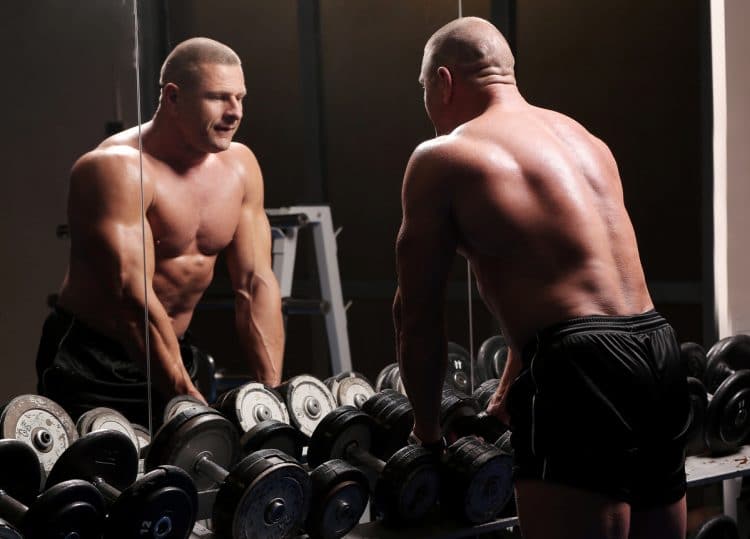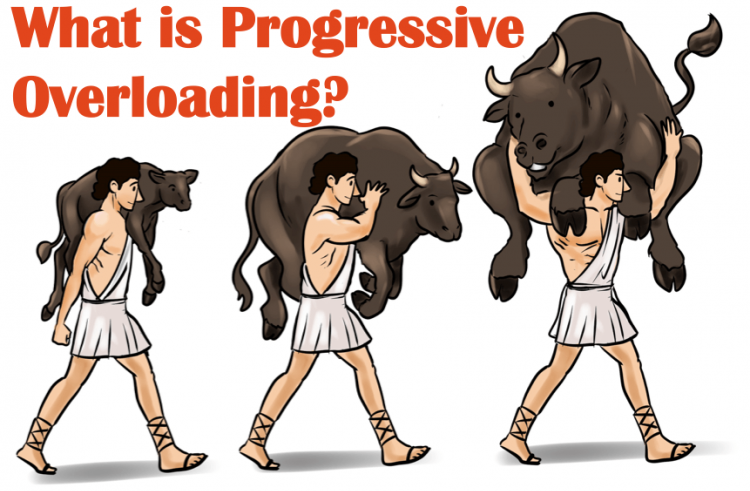We all have our resolutions this year. To eat better, train more consistently, and to develop better healthy daily habits. But for most of us those resolutions quickly crumble. Better luck next time right?
Do not despair. If your resolution this time is to clean your training slate and start over then you’re in the right place. We often like to treat each new year as a new opportunity, another chance to do it right and finally stick to the promises we made to ourselves.
Read on to get a rundown of how to restart your training efforts and to once and for all stay true to that resolution.
New Year, New You?

The first step is to define why you’re making such a resolution. Why do you want to make such a change? Ask yourself some simple questions, but be brutally honest.
- Am I tired of training the way I’ve been for the past year?
- Have I made realistic gains lately?
- Am I burnt out?
- What is my goal for this year?
- Do I have a vision of where I want to go with my training in the next five or so years?
This is where honesty has to rule. Don’t just throw a few answers down that quickly come to mind. Instead, take each question and think on it for a bit. After asking, for example, walk away, think for a bit and then come back after an hour and see how you feel. You may be surprised with the answers that come to mind.
After you’ve done that, it’s time to move on to the next big question.
Look Back and be Honest
Has the training you’ve been doing for the past few months or even years truly been effective toward your goals? This is where that brutal honesty has to rear its head one more time. For most of us our ego starts to pound on the table relenting to put a stop to this. “You’re starting to get close to the truth!” it shouts.
What I mean is, we’ve been so ingrained to train a certain way that anything different, anything outside of our comfort zone is a threat. When we start to question the way things have been done and get considerably uncomfortable our alarm goes off and we start to panic.
Is my training that ineffective?
Have I honestly been at a standstill for that long?
Am I going to repeat the same pattern this year?
If you’re still reading then it’s time for that change. It’s time to throw aside your comfort, your familiarity, and your ego and be open for a change. Not only a change, but to start over, to be a newbie, a freshman on campus once again. But this time we’re going to start off right.
Adopt a Realistic Approach

The iron game of packing on lean muscle is not only an old one, but also an uncomplicated one as well. These days things feel confusing. There are so many camps of thought when it comes to training programs, techniques, and beliefs. It’s easy to become frustrated.
But here is where we need to become realists. We need to be pragmatic in our approach so that anything we decide to do will be with purpose and have the ability to easily be put into practice.
Adopt a realistic approach to training. What do we know? How is muscle built? Which exercises are best? What about volume, frequency, and rep ranges?
From here on out we will be taking a realistic view. We will only adopt principles and practices that have stood the test of time along with keeping things as simple as possible. Building lean muscle isn’t complicated so let’s stop treating it like rocket science and get back to basics.
Start Back to Basics
What are the basics? You’ve heard of the KISS principle? Keep It Simple Stupid. That’s just what we’ll do. Now you may be telling yourself that you already know what’s coming up. Compound movements, moderate reps and load, nothing too fancy, etc. And you’re right.
But when’s the last time you actually followed those principles without stuffing your program with fluff? Stuff like numerous cable movements, isolation exercises, and specialized gym equipment?
Let’s take a knee and go over some of the basic training principles that we should have been practicing all along.
Develop Logical Principles
Again, some of these will be all too familiar, but the goal here is to wipe your slate and start over with the basics. Yes, you know these well, but they deserve to be revisited and put into practice without adding any unnecessary fluff or ego lifting. Let’s get started.
1- Compound Exercises
You guessed it, bench presses, pull ups, rows, shoulder presses, squats, Romanian deadlifts, just to name a few. Resist the urge to add in fly exercises, concentration curls, or any other isolation moves.
We want to stick to a strict list of basic exercises and stay committed to that list for a significant length of time. We’ll go over a program a little later.
Related: The Best Compound Exercises
2- Frequency

One of the most overlooked factors in many programs is establishing a frequency of training for each body part each week. Too many lifters fall into the trap of training chest on Monday, back on Tuesday, Shoulders on Wednesday, etc. Here, we’re going to increase the frequency a bit to twice per week. That’ll give you more opportunity to stimulate growth.
Related: How Often Should You Work Out?
3- Volume
Keep your overall volume rather moderate and evenly spread. What does that mean? It means avoiding performing a massive amount of sets for your favorite body parts and a miniscule amount for your least favorite. Additionally, since your frequency will be twice per week, a more moderate volume will be realistic for recovery. Go with 6 to 8 sets per body part.
Related: Do More Volume Training For Huge Gains
4- Rep Range

Rep range has been another subject that has been misinterpreted over the years. Many lifters believe that you simply have to lift more weight with few reps in order to grow muscle mass.
Yes, progressive resistance with heavy weight will grow some muscle, but recruiting more muscle fibers and fatiguing those fibers stimulate growth. A more moderate rep range will accomplish both fatigue and a heavy enough weight to get the job done.
Related: Sets vs. Reps: Everything You Need to Know
5- Rest Periods
With fatigue in mind, rest periods must be taken seriously. As yet another subject rarely taken under consideration, rest periods can make or break your gains in muscle mass. When fatigue is the goal, a rest period of 1 to 2 minutes is enough rest for recovering strength while maintaining a state of recruiting more fibers for the next set.
Related: How Long Should You Rest Between Sets?
6- Form
Not enough can be said about form. Look around any gym and you’ll see too many violating the laws of gravity as they swing, sway, and heave up massive poundages in hopes of boosting their egos and showing their feats of strength on social media.
It can not be stressed enough that form is imperative to not only your success but your longevity. When in doubt, lower the weight and practice proper, textbook form. Full stop.
7- Alternative Exercises
Not every exercise is designed for every lifter. Some feel the bench press stresses their shoulders, or barbell squats strain their backs. Don’t be afraid to drop some of these staples for alternatives. Use dumbbells instead of a barbell, front squats instead of back squats, or try a machine row if barbell rows tweak your spine. Do what you have to do to stay on track and find comparable alternatives.
Related:
8- Progressive Overload

As stated earlier, progressive overload is a necessary tool on your journey of building muscle. Whether you add more weight (in small increments) or increase the amount of reps for an exercise, you must be progressive-minded for every workout. Now, most will equate this with heavy loads, however, this principle can be applied to sets of 6 as well as sets of 12 or even 15. As long as you’re moving in a positive direction.
9- Patience and Commitment
Patience with any program can’t be stressed enough. Any progress will take time and will ebb and flow. One month you’ll feel like you can take on the world while another may find you standing still. No matter the phase you’re in, stay the course and when things don’t feel like they’re moving forward strengthen your commitment. Program hopping will only leave you frustrated.
10- Changes
There will come a time when things need to change. For most, this will not be a frequent occurrence. Most lifters need to give a program at least three months of consistent work in order to see any changes and experience what is working and what isn’t. This need for a shift will, however, come. The program should at least establish a foundation to work from so when you do decide to replace exercises, move around the split, or mess with other factors like volume or reps be sure to only change one thing at a time. Too much change too soon will only prohibit you from knowing what the real problem was.
Sample Program
The following program can be done four days per week. For example, Monday, Tuesday, Thursday, and Friday. Remember to practice textbook form, rest between 1 and 2 minutes, and stay focused.
Monday
- Incline barbell bench press 3 x 6-12
- Flat dumbbell bench press 3 x 6-12
- Wide-grip pull up 3 x as many as possible
- T-bar row 3 x 6-12
- Seated dumbbell shoulder press 3 x 6-12
- Barbell shrug 3 x 6-12
Tuesday
- Barbell curl 3 x 6-12
- Close-grip bench press 3 x 6-12
- Standing calf raise 3 x 10-12
- Barbell back squat 3 x 8-12
- Barbell lunge 3 x 10-12
- Lying leg curl 3 x 8-12
Thursday
- Incline bench dumbbell press 3 x 8-12
- Flat barbell bench press 3 x 6-12
- Close-grip pull up 3 x as many as possible
- Bent-over barbell row 3 x 6-12
- Standing barbell shoulder press 3 x 8-12
- Dumbbell upright row 3 x 10-12
Friday
- Seated dumbbell curl 3 x 6-12
- Lying barbell triceps extension 3 x 6-12
- Seated calf raise 3 x 10-12
- Bulgarian split squat 3 x 8-12
- Machine leg press 3 x 10-12
- Barbell Romanian deadlift 3 x 8-12
In Closing
It doesn’t take a rocket scientist to build a successful muscle-building program and getting back to basics has been beaten to death, but you need to ask yourself if you’re really following this advice. The program above will at the very least give you a solid base to work from for the next three months so hop on board and start the New Year right.


